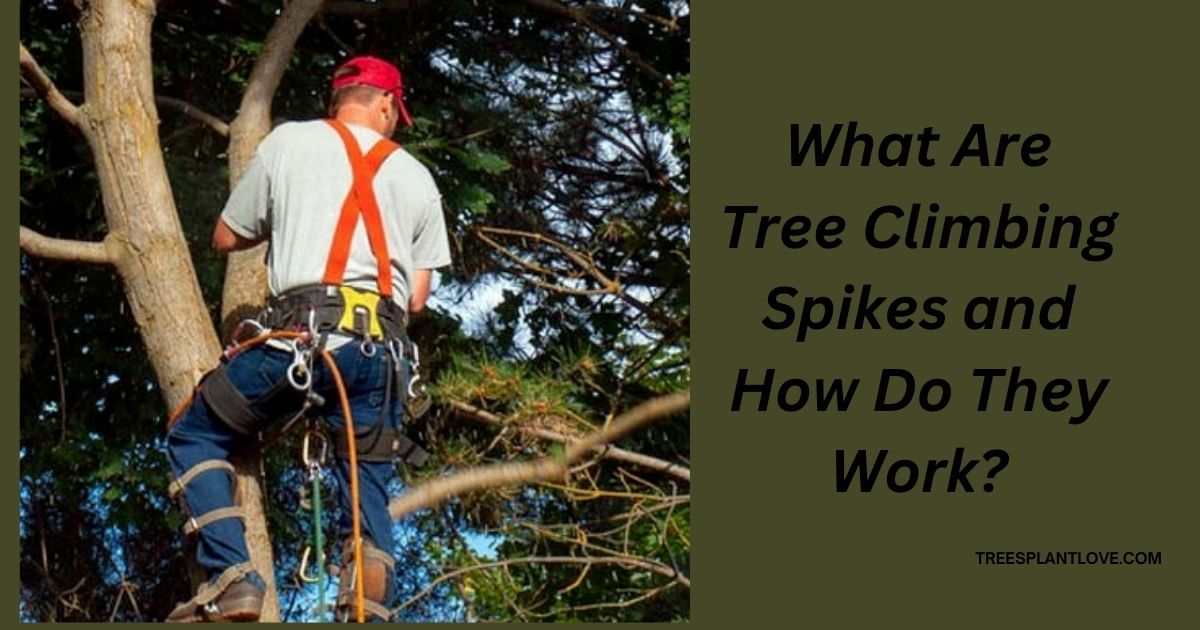
What Are Tree Climbing Spikes and How Do They Work? Complete Guide for Climbers
What Are Tree Climbing Spikes and How Do They Work?: Tree climbing spikes are specialized tools used by arborists, forestry professionals, and even enthusiasts to assist in safely and efficiently climbing trees. Whether it’s for pruning, removal, or maintenance, tree climbing spikes provide a stable and secure way to ascend tree trunks. But what exactly are these tools, and how do they work? Let’s dive into the details.
What Are Tree Climbing Spikes?
Tree climbing spikes, also known as climbing irons or spurs, are metal spikes that attach to a climber’s boots, allowing them to grip the tree trunk as they ascend. These spikes are typically made of durable materials such as steel or aluminum, and they are designed to dig into the bark of trees, providing the climber with the necessary leverage to climb vertically.
Tree climbing spikes consist of two main components:
- The Spike: A sharp, pointed metal piece that penetrates the tree trunk. It’s usually curved to follow the natural shape of the leg and provide an ergonomic fit.
- The Strap or Harness: A system that attaches the spikes to the climber’s boots or legs, often with padded straps for comfort. This harness ensures that the spikes remain securely fastened as the climber ascends or descends the tree.
How Do Tree Climbing Spikes Work?
The primary function of tree climbing spikes is to offer stability and traction to climbers. Here’s a breakdown of how they work:
- Attachment to the Boot or Leg: Tree climbing spikes are typically attached to the climber’s boots or legs using a harness system. The spikes are positioned so that the pointed ends are directed outward, allowing them to puncture the bark of the tree when the climber applies pressure.
- Engaging with the Tree Trunk: When a climber places their foot or leg against the tree trunk, the spike digs into the bark. As the climber applies weight and pressure, the spike’s sharp point grips the tree, providing a secure foothold and helping the climber to maintain balance.
- Climbing and Ascending: With each step, the climber drives the spikes deeper into the bark, creating a stable point of contact. This allows the climber to climb upward by alternating between the spikes on each leg, pushing off with one leg while the other leg’s spike remains engaged.
- Support and Stability: The spikes work in tandem with the climber’s upper body strength. As the climber ascends, they use their hands to hold onto branches or the tree trunk, while the spikes provide essential support from the ground up. The climber’s balance is aided by the stability provided by the spikes, which are designed to dig deeply into the tree, offering traction even on vertical surfaces.
Benefits of Using Tree Climbing Spikes
- Increased Efficiency: For professionals such as arborists, tree climbing spikes significantly reduce the time it takes to ascend a tree. They make the process quicker and more efficient, especially when dealing with large trees that might otherwise be difficult to scale.
- Enhanced Safety: Climbing without spikes can be hazardous, particularly on larger trees or rough surfaces. Tree climbing spikes ensure a secure grip, reducing the risk of slipping or falling while climbing.
- Support for Complex Jobs: Arborists often need to perform tasks like pruning, trimming, or even tree removal. Tree climbing spikes give them the ability to reach high branches and work at various heights, improving their overall productivity and performance.
Safety Considerations When Using Tree Climbing Spikes
While tree climbing spikes are incredibly useful tools, they are not without risks. It’s important to use them responsibly to avoid injury to yourself or the tree. Here are a few safety considerations:
- Minimize Damage to the Tree: One of the main concerns with using climbing spikes is that they can damage the tree. The sharp spikes can puncture the bark and create wounds that may lead to infections or other health issues for the tree. Therefore, climbers should avoid using spikes on trees that they intend to preserve for long-term growth. Many arborists only use spikes when absolutely necessary, such as in the case of tree removal or pruning.
- Proper Fit: Ensure that the climbing spikes are properly fitted to your boots or legs. If they are too loose, they could slip, causing an unsafe ascent. A secure and comfortable fit is essential to avoid accidents.
- Regular Maintenance: Just like any tool, tree climbing spikes need to be well-maintained. Check for rust or wear regularly and ensure that the straps and harnesses are secure. Dull or damaged spikes should be replaced to maintain effectiveness.
Alternatives to Tree Climbing Spikes
Although tree climbing spikes are commonly used by professionals, there are alternatives that may be more suitable depending on the job. These alternatives include:
- Rope-assisted climbing systems: These systems use ropes, pulleys, and climbing harnesses, which are gentler on the tree and are preferred for tasks that don’t require the use of spikes.
- Aerial lifts or bucket trucks: For large-scale tree maintenance, aerial lifts or bucket trucks can allow workers to reach higher branches without climbing the tree directly.
Conclusion
Tree climbing spikesare indispensable tools for arborists and professionals who require efficient, safe, and secure methods of climbing trees. While they can make climbing easier and faster, they should be used responsibly to prevent damage to the trees and ensure climber safety. With proper use and maintenance, tree climbing spikes remain an essential tool in the tree care industry.

Leave a Reply